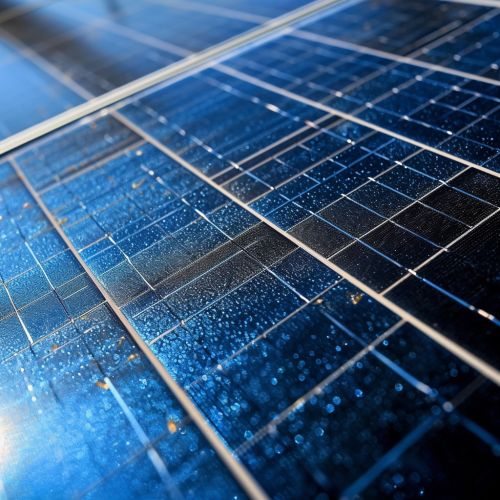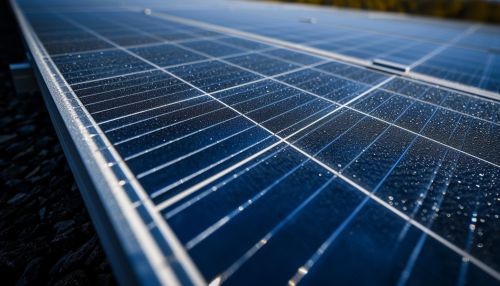Multi-crystalline solar cell
Introduction
Multi-crystalline solar cells, also known as polycrystalline solar cells, are a type of photovoltaic cell used to convert sunlight into electricity. They are made from multiple crystals or grains of silicon, which are melted and poured into a square mold. Once cooled, the silicon forms a block of multi-crystalline structure, which is then cut into thin wafers to create the solar cells.


History and Development
The development of multi-crystalline solar cells began in the late 1970s, as a more cost-effective alternative to monocrystalline solar cells. The first commercial multi-crystalline solar cells were introduced in the early 1980s by companies such as Kyocera and Sharp. Since then, advancements in manufacturing processes and cell design have significantly improved the efficiency and cost-effectiveness of multi-crystalline solar cells.
Manufacturing Process
The manufacturing process of multi-crystalline solar cells involves several steps. First, high-purity silicon is melted in a crucible. The molten silicon is then poured into a square mold, where it cools and solidifies into a block of multi-crystalline silicon. This block is then cut into thin wafers, which are cleaned, doped with impurities to create a p-n junction, and coated with an anti-reflective layer. Finally, metal contacts are added to the front and back of the wafer to allow for the flow of electricity.
Structure and Operation
Multi-crystalline solar cells are characterized by their grainy texture and bluish color. The grainy texture is a result of the multiple crystals or grains of silicon that make up the cell. When sunlight hits the cell, photons are absorbed by the silicon, which excites electrons and creates an electric current. The efficiency of a multi-crystalline solar cell is determined by the quality of the silicon and the design of the cell.
Efficiency and Performance
While multi-crystalline solar cells are less efficient than monocrystalline solar cells, they are more cost-effective to produce. The efficiency of a multi-crystalline solar cell typically ranges from 15% to 17%, although higher efficiencies can be achieved with advanced cell designs and manufacturing processes. The performance of multi-crystalline solar cells is also affected by temperature, with higher temperatures leading to lower efficiencies.
Applications
Multi-crystalline solar cells are used in a variety of applications, from residential rooftop solar panels to large-scale solar farms. They are also used in off-grid applications, such as solar-powered water pumps and street lights. Due to their lower cost and good performance under a wide range of light conditions, multi-crystalline solar cells are a popular choice for many solar installations.
Future Trends
Advancements in manufacturing processes and cell design are expected to further improve the efficiency and cost-effectiveness of multi-crystalline solar cells. In addition, the development of new materials and technologies, such as perovskite solar cells, could potentially increase the efficiency of multi-crystalline solar cells beyond that of monocrystalline solar cells.
